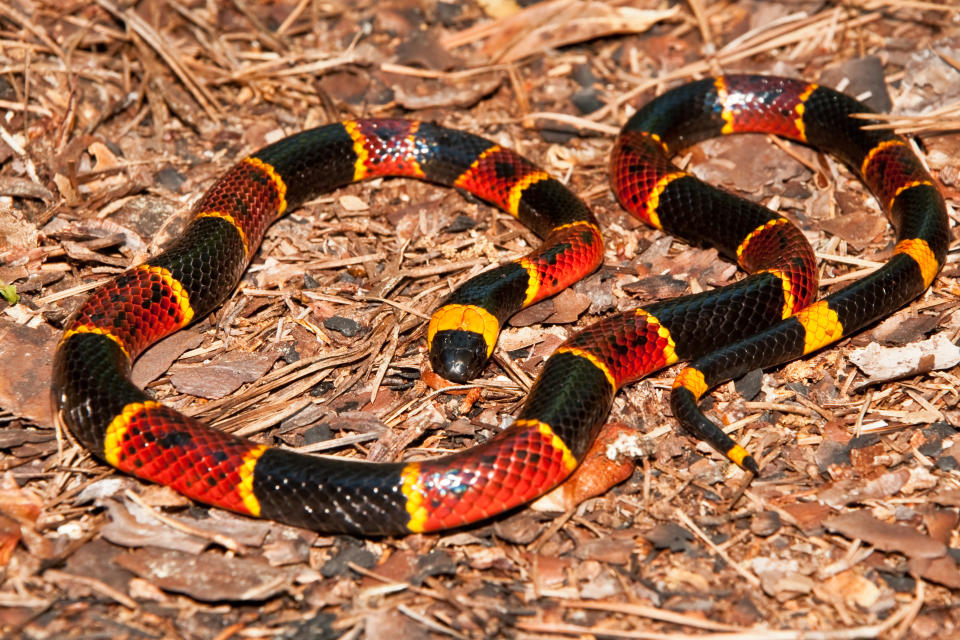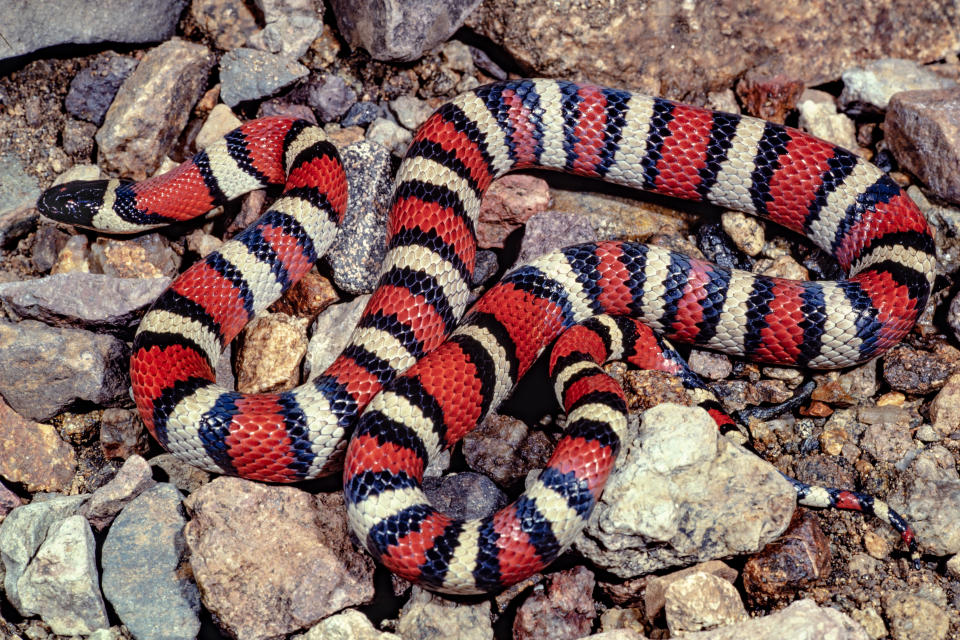Pit bull puppy dies protecting Florida children in their own backyard
A 9-month-old pit bull named Zeus died while protecting two of his owner's children from a venomous coral snake in their family's backyard.
Gina Richardson, a mother of four from Webster, Fla., told CNN that her 10-year-old son Oriley was playing outside on Sept. 23 when Zeus suddenly lunged toward the child and began wrestling with something on the ground, which she initially mistook for a rope.
As another one of Richardson's sons, 11-year-old Orion, entered the yard to bring Zeus more water, the dog, sensing both boys were in danger, lied down on the venomous creature to try and smother it, sustaining four bites before eventually biting off and swallowing the snake's head.
Richardson says that after discovering Zeus' injuries, she rushed the puppy to a nearby animal hospital, where he was given anti-venom. Tragically, Zeus succumbed to his injuries the following day, with the entire Richardson family surrounding him to say goodbye — including the hero pup's own mom, Sega, who was visibly devastated by the loss.
"Sega goes over to Zeus' head and puts her paws up on the table and takes a sniff," Richardson told CNN. "Her ears came back, she got down, she instantly jumped on the sofa next to me and put her head on my thigh in sorrow. At that moment not only was my family broken, but his own mother was broken."

Although Richardson says her family is heartbroken, she remains thankful for Zeus' actions and hopes his death can serve to change public opinion on pit bulls, an often-contested breed.
"I feel like I may have lost one of my children had he not been there," she said.
The family has since started a GoFundMe to cover the cost of the dog’s medical bills.
Coral snakes, like the one that killed Zeus, are native to wooded, sandy and marshy areas of the southern United States and tend to hide in leaf piles or burrow into the ground, according to the CDC. They may sometimes be confused with nonvenomous scarlet kingsnakes, which have similar tri-colored bands, although in a different arrangement.
The red bands of a coral snake are next to the yellow bands, whereas the red bands of a scarlet kingsnake are next to the black bands. Their nearly identical appearance is likely the evolutionary result of the kingsnake adapting to disguise itself as a dangerous coral snake in order to ward off predators, Live Science notes.


If you have been bitten by a coral snake — or any type of snake — call 911 immediately and try to remember the color and shape of the snake, which can help with treatment.
While waiting for emergency responders, keep still and remain calm, as doing so can help slow down the spread of venom, the CDC says. Do not try to pick up or trap the snake, and do not attempt to apply a tourniquet to the affected area, slash the wound, suck out the venom, apply ice or immerse the wound in water.

